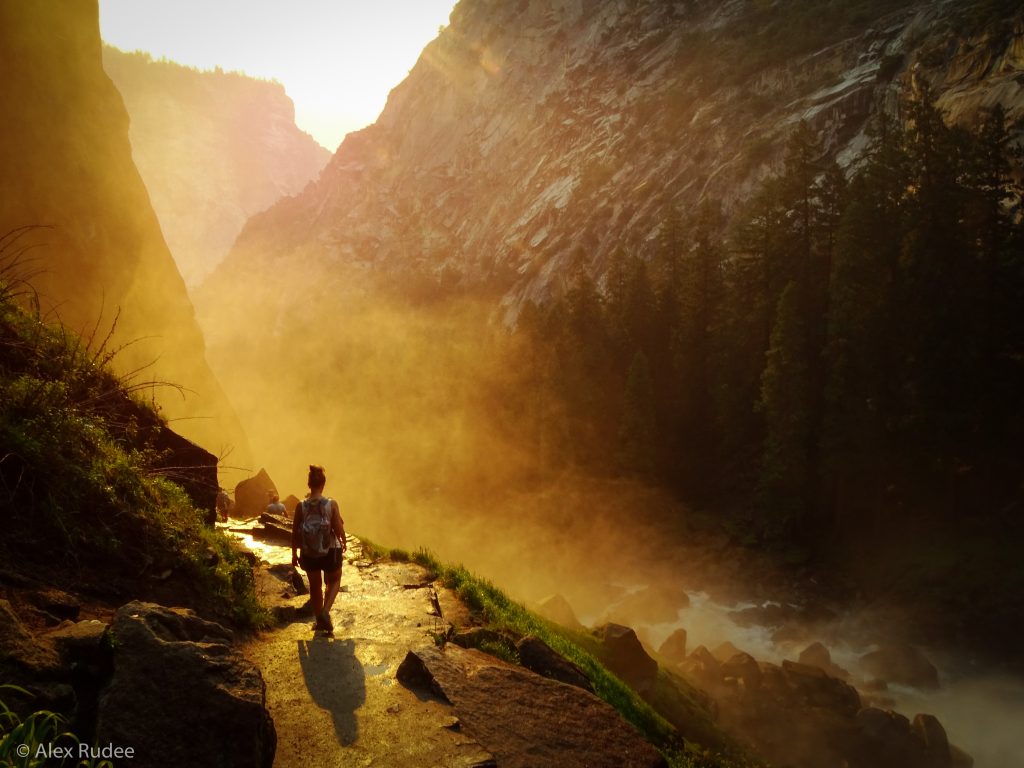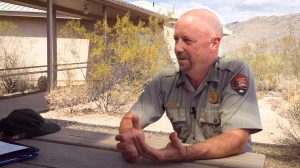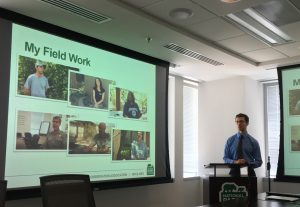“The story is a machine for empathy.”
-Ira Glass, host of NPR’s This American Life

What do I know about telling stories?
Until recently, not much. I’m in grad school. Academic papers full of citations from scientific journals don’t make for good bedtime reading. Empathy is not a big part of my homework for environmental law or natural resource economics.
Even in my personal life, I’ve never been good at telling stories.
“Something bad happened today,” I recently informed my mom over the phone, then proceeded to tell her how I got a flat tire on my bike, oblivious to her silent worrying that I’d broken a leg or accidentally set fire to my house.
I do love stories, though – books, blogs, movies, podcasts, you name it. I eat them right up. So I was excited when my manager at the National Parks Conservation Association, despite my obvious lack of storytelling proficiency, decided to let me give it a go.
I wouldn’t be telling just any stories for my summer internship project – these would be among the most challenging, complicated stories around. I was tasked with finding and telling stories about how air pollution and climate change are affecting national parks.
There’s a reason why nearly a third of Americans don’t believe global warming is happening and why more than half aren’t very worried about its effects. We haven’t been very good at sharing stories about climate change. There’s no protagonist in rising sea levels or extreme weather events; no way to put yourself in the shoes of ocean acidification or melting ice caps.
Telling stories about invisible particles in the air and upper atmosphere requires more creativity than most. And I had less than three months to find a way to pull it off.
Here is the step-by-step guide I wish someone had handed to me when I set off on this daunting storytelling project. This is how to tell stories about air pollution and climate change (or anything else, for that matter) in 10 easy steps:

- Talk to people who know more than you do about journalism. Luckily, NPCA had great resources to help me out on this front: their blog and magazine editors were happy to help out with Storytelling 101.
- Do the research. Even in storytelling, you need to have rock-solid, peer-reviewed sources to back up whatever you say.
- Make up some questions that will lead people to give you the story you want to write. Think of it as part informational interview, part therapy: things like “Why did you do that?” or “How do you feel when…?” actually work pretty well.
- Get on the phone and track down the people you want to talk to. Ask them a few of your made-up questions for practice, to see if your story is on the right track. Working through a well-connected organization like NPCA was a big asset for this step.
- Buy things – now the fun begins! Plane tickets. Rental cars. Hotel rooms. Tripod and microphone for video interviews (I did the actual recording on a trusty iPhone). Keep that credit card handy.
- Travel! Finding stories worth telling means spending a lot of time on the road. In the span of three weeks, I visited the Shenandoah Valley in western Virginia, the Sonoran Desert in southern Arizona and several locations in California, interviewing people wherever I went. It definitely helps to have a serious bite from adventure bug.
- Find the story. Ideally, you had a good idea of the story back at No. 2 where you did all that research, but stories have a funny way of changing once you see and hear things for yourself. Follow the story, wherever it goes.
- Put it all together. However you’re planning to tell the story, this is the time to make that happen. I picked out the best quotes to create articles for the NPCA blog, and edited the interview footage I had into snappy little web videos.
- Share your work – if you tell a story that nobody hears, is the story really told at all? Stories are meant to educate, entertain, inspire action – especially when the subject is air pollution or climate change. So share it, present it, tweet it, snap it (or whatever it is the kids do these days). Get it out there.
- Rinse and repeat. If I’ve learned one thing this summer, it’s that there’s so many more stories waiting to be told!

Somehow, I managed to fumble my way through all 10 steps before the end of my 11-week internship and churned out three stories.
The first story, about brook trout and climate change in Shenandoah National Park, is now featured on the NPCA blog. The other two, set in Saguaro National Park and in Yosemite, will roll out in the coming weeks.
I don’t know how persuasive these stories will be in rallying people to the cause, but I hope that, in the midst of the right vs. left, fact vs. alternative fact and an endless news cycle that’s swallowed our country, personal stories like these might just be able to cut through the noise.
And I’m sure that, along the way, I’ve learned how to tell better stories.

HI Alex,
Great article! I am a MEM graduate back in 2009, forming my own VR Cinematography company. We want to help tell the story of conservation to engender empathy for the planet and its resources. If you would ever like to collaborate, please get in touch.
Best,
Holly Bowen